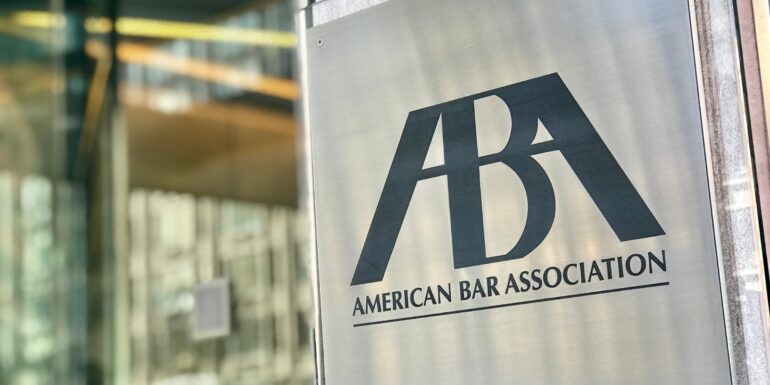TL;DR:
- ABA established AI Task Force after adopting Resolution 604 at 2023 Midyear Meeting.
- Resolution 604 outlines guidelines for responsible AI use, emphasizing human oversight and accountability.
- AI Task Force’s mission: Address AI’s impact on the legal profession, offer insights, and identify risks.
- Task Force focuses on six key areas, including AI and the Profession, Risk Management, Access to Justice, Governance, Challenges, and Legal Education.
- ABA advocates AI education for lawyers and judges, promoting an understanding of AI’s development and ethical aspects.
Main AI News:
In a recent turn of events, the American Bar Association (ABA) has propelled itself into the vanguard of cutting-edge developments by instituting the AI Task Force. The ABA’s resolute stride in the realm of artificial intelligence (AI) was underscored last month when it embraced Resolution 604 during its 2023 Midyear Meeting in New Orleans. The resolution, which encompasses a comprehensive framework for AI implementation, underscores the meticulous design, development, and deployment of AI technologies by organizations entrenched in the technological landscape.
Resolution 604 unequivocally delineates the responsibilities expected of AI developers, establishing the precedent that their creations be firmly subject to human oversight, control, and authority. This includes the imperative inclusion of accountability mechanisms, wherein developers must assiduously mitigate potential harm or injury arising from their AI innovations. Additionally, the resolution champions the values of transparency and traceability, mandating that the products arising from AI endeavors exhibit a clear and accountable lineage.
Of noteworthy mention is the resolution’s directive towards legislators and regulators, beseeching federal and state entities to harmonize their AI policies with the standards stipulated within Resolution 604. This synergy aims to orchestrate a cohesive approach to the regulation and governance of AI technologies on a broader scale.
Delving deeper into this pivotal development, ABA President Mary Smith took up the mantle of leadership, establishing the AI Task Force in response to the clarion call for strategic guidance in the AI domain. President Smith, a steadfast advocate for addressing seminal issues, elucidated that the ABA’s historical precedence in addressing major societal shifts is underscored yet again. Acknowledging the rapid proliferation of AI across private and public sectors, President Smith posited that the ABA’s unique position empowers it to navigate the twin trajectories of promise and peril inherent in emerging technologies.
The AI Task Force’s charter, as unveiled on the ABA’s official platform, is a tripartite endeavor encompassing profound objectives. Firstly, the task force is poised to dissect the impact of AI on the legal profession and the practice of law. This entails in-depth insights into how AI can be embraced as a trustworthy and responsible ally in the legal domain. Secondly, the task force commits to illuminating pathways that mitigate potential AI-associated risks, fostering an environment where the adoption of AI is coupled with prudent safeguards. Lastly, the task force shall elucidate strategies to effectively grapple with the inherent risks posed by AI, crystallizing a blueprint for managing these challenges.
The task force’s multifaceted approach will not only furnish legal practitioners with comprehensive insights into AI’s integration but also offer invaluable guidance on navigating this evolving landscape responsibly. The six prisms through which the task force’s efforts are refracted include AI and the Profession, AI Risk Management, AI and Access to Justice, AI Governance, AI Challenges, and AI and Legal Education. Each facet underscores the multidimensional aspects of AI’s footprint in the legal sector, encapsulating the potential and pitfalls alike.
Particularly salient is the focus on AI in Legal Education, an endeavor that underscores the onus on legal practitioners and law students alike to stay abreast with AI’s dynamism. The ABA’s stance resonates with the belief that familiarity with AI’s nuances is imperative for lawyers and judges, enabling them to comprehend its development, deployment, and attendant ethical implications. Moreover, the suggestion to integrate AI’s applications and ethical considerations into legal education underscores the ABA’s commitment to fostering a future generation of legal minds that are poised to navigate the evolving landscape with acumen and discernment.
Conclusion:
The establishment of the AI Task Force by the ABA, spurred by the adoption of Resolution 604, marks a pivotal moment in the legal landscape. This strategic move reflects the ABA’s commitment to shaping the integration of AI in the legal profession responsibly. As AI’s influence continues to expand, the ABA’s proactive approach not only guides legal practitioners but also signals a market demand for ethical and accountable AI implementation across industries. The ABA’s initiative serves as a beacon, illuminating the path toward a future where technology and ethics converge harmoniously.

